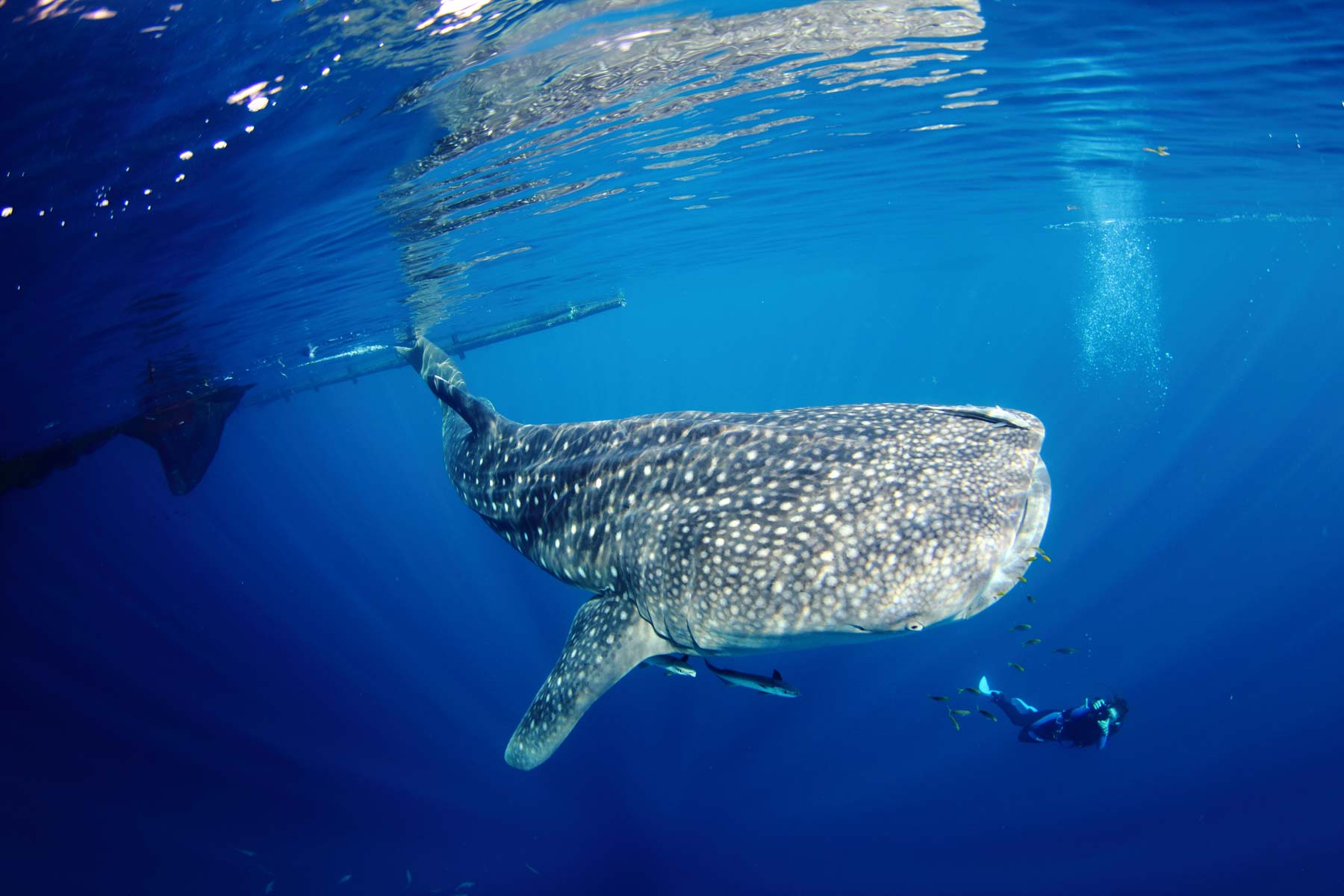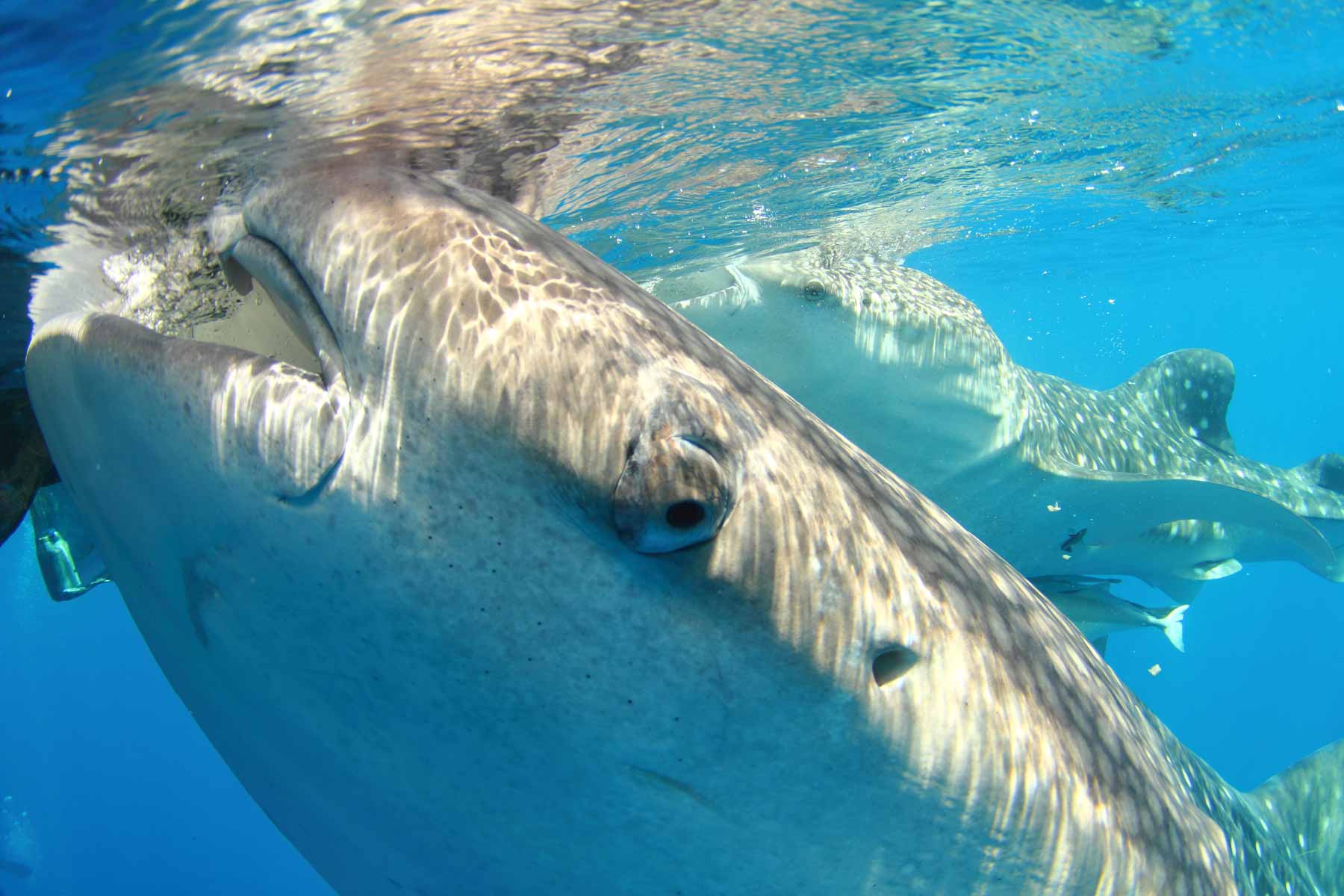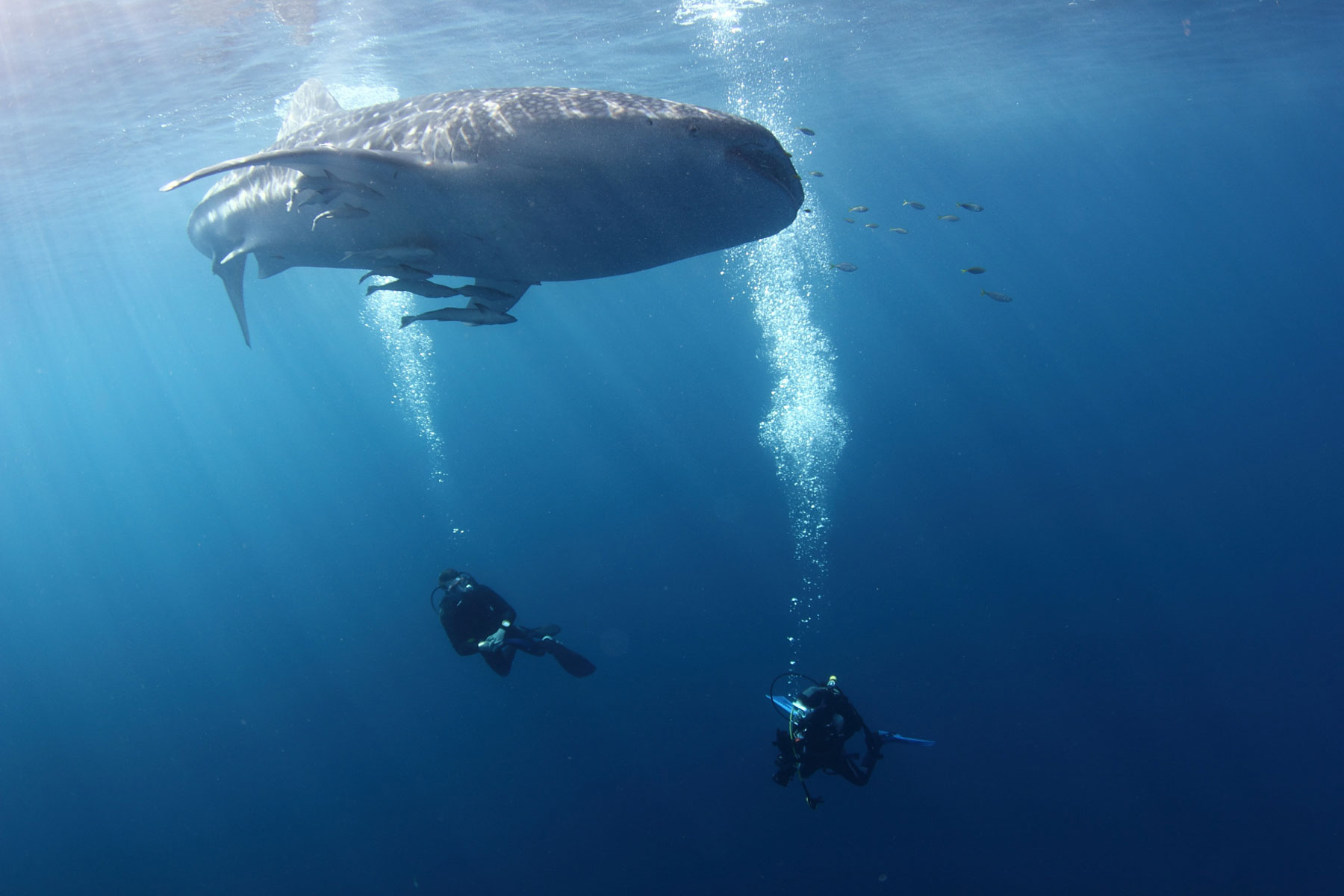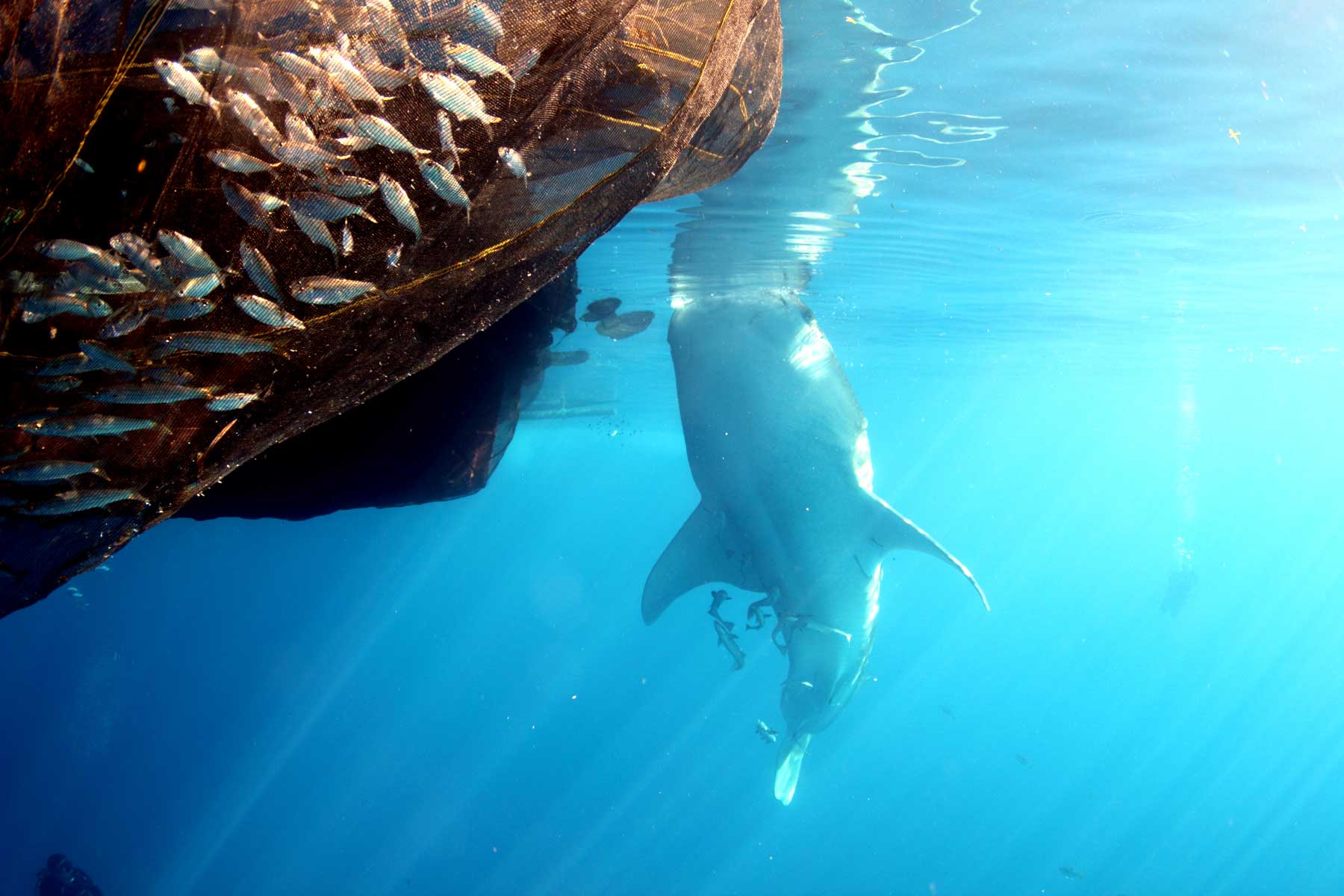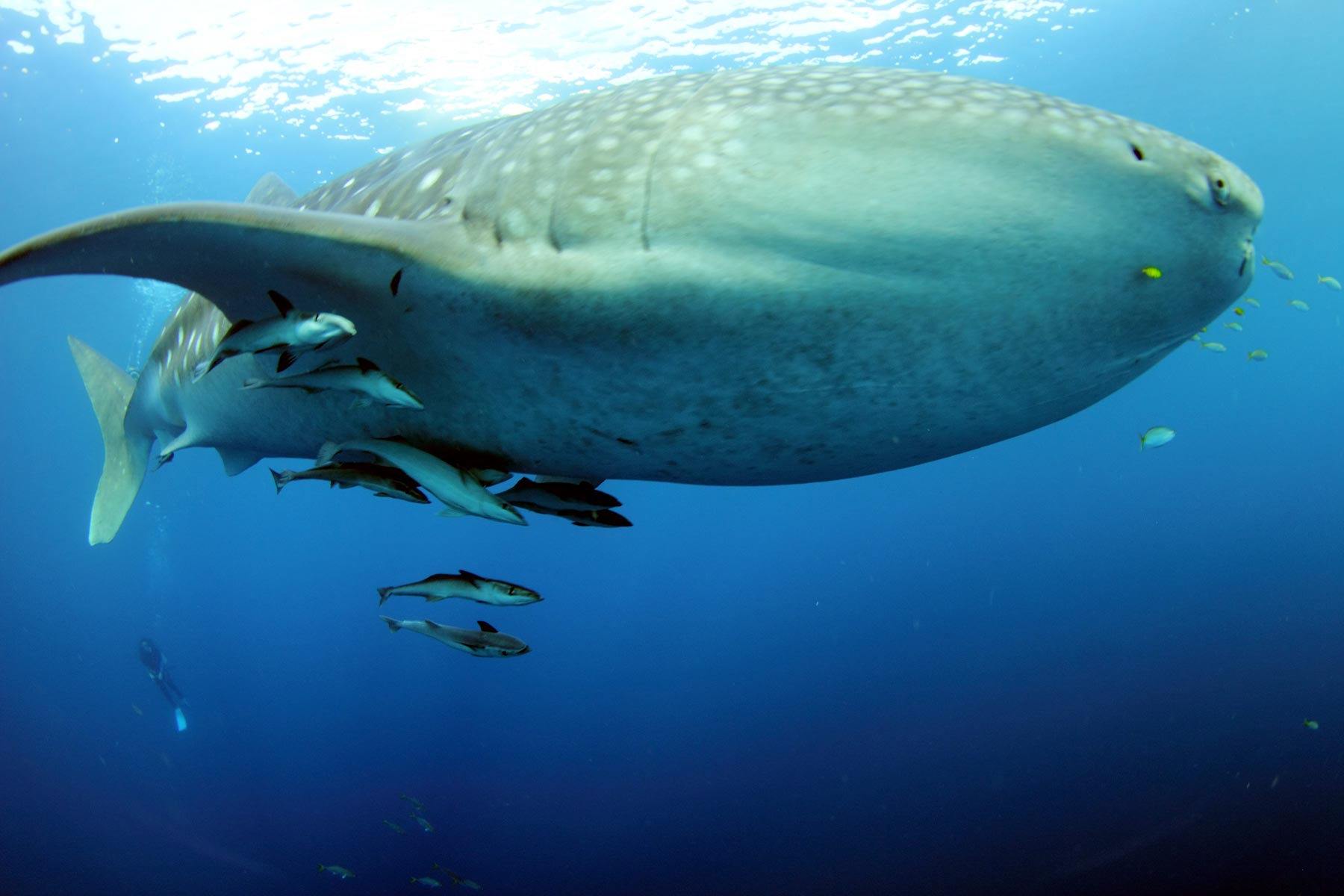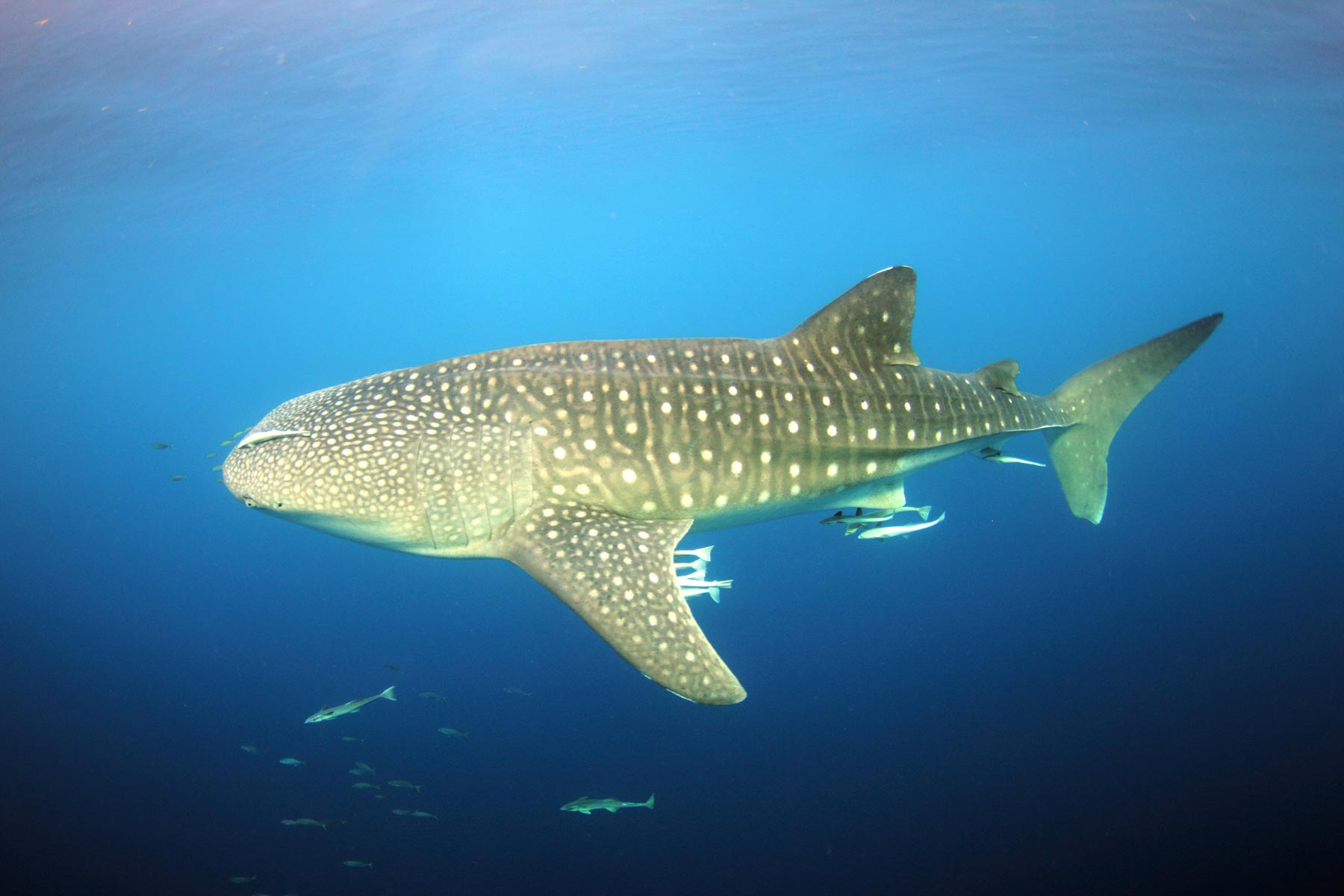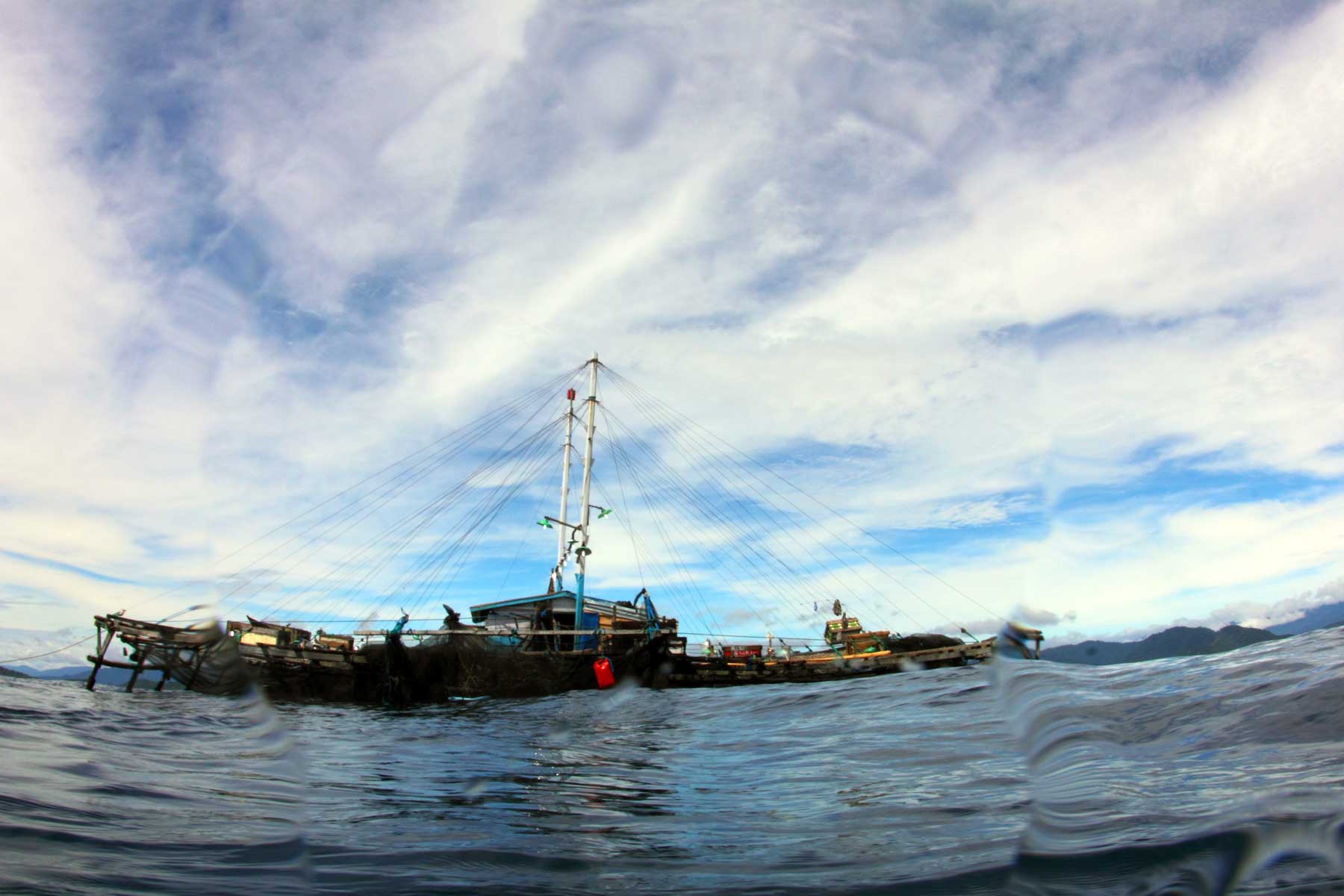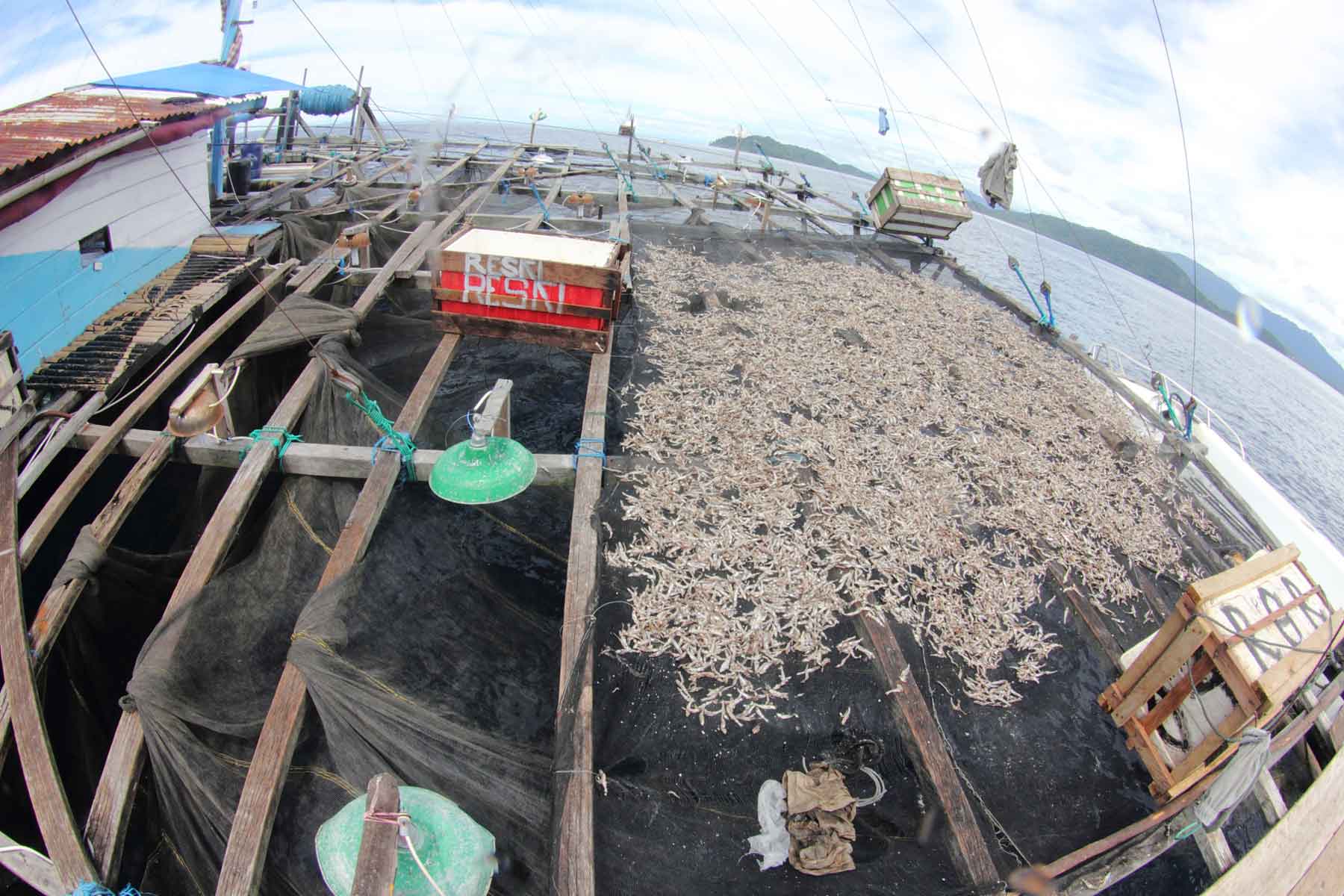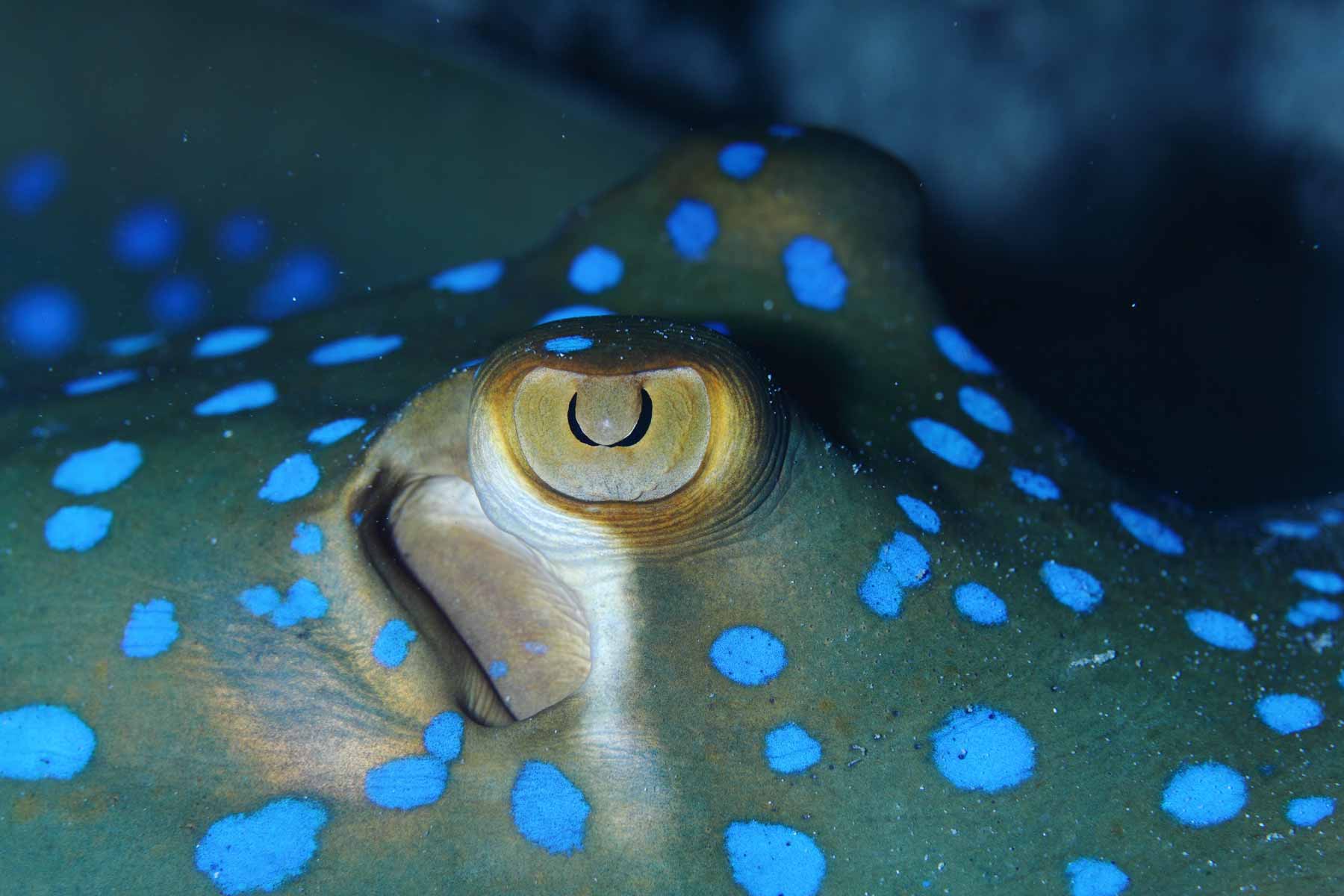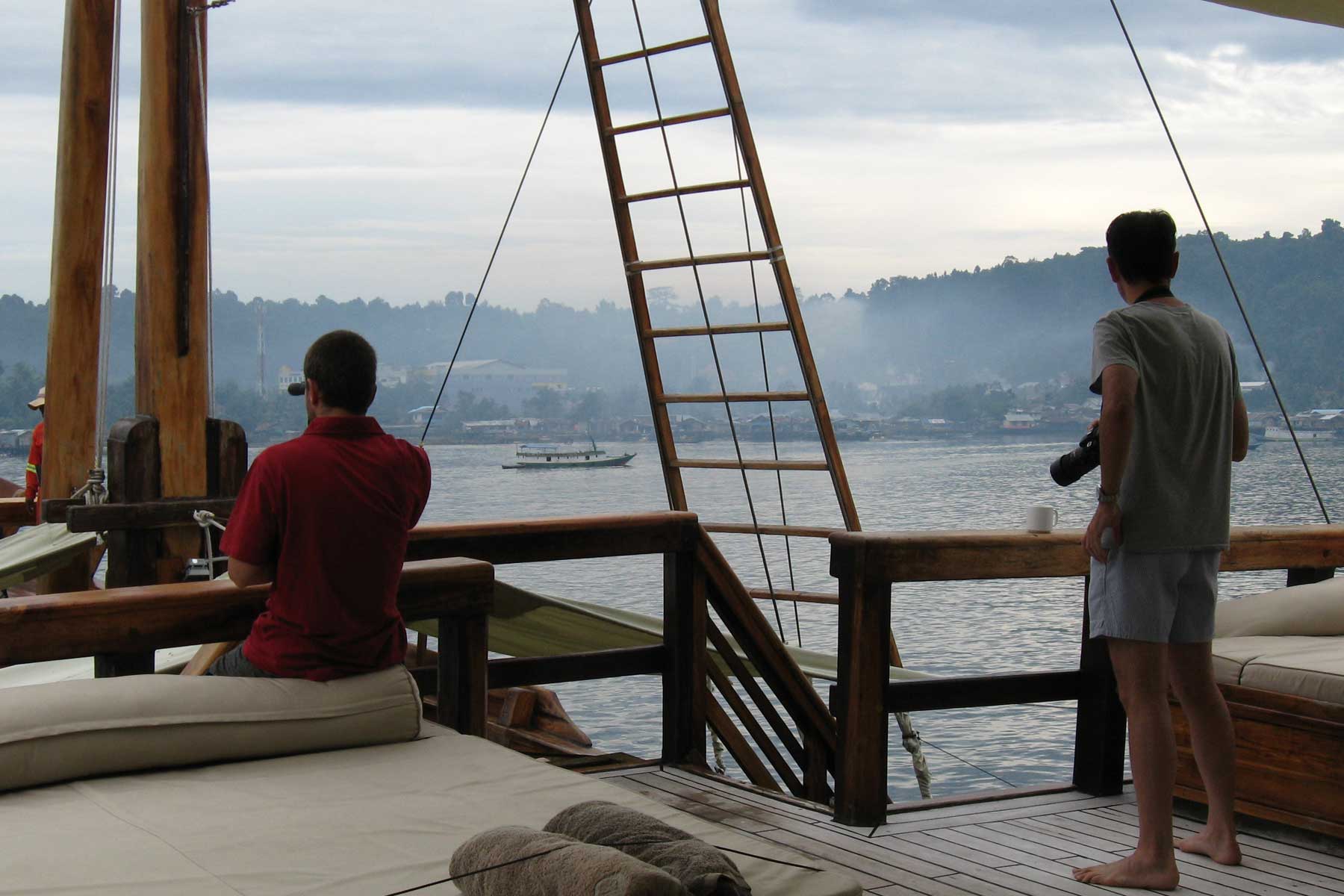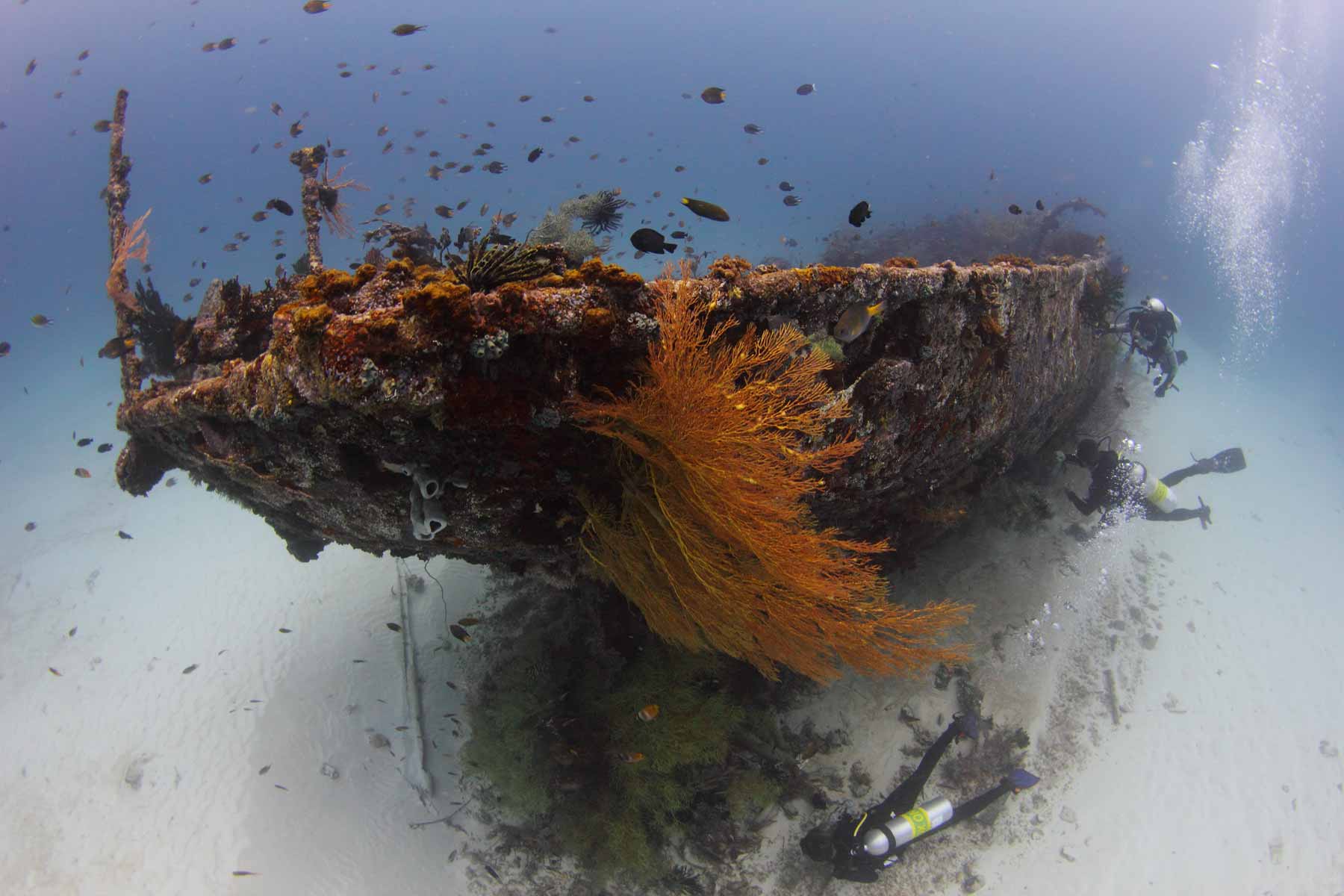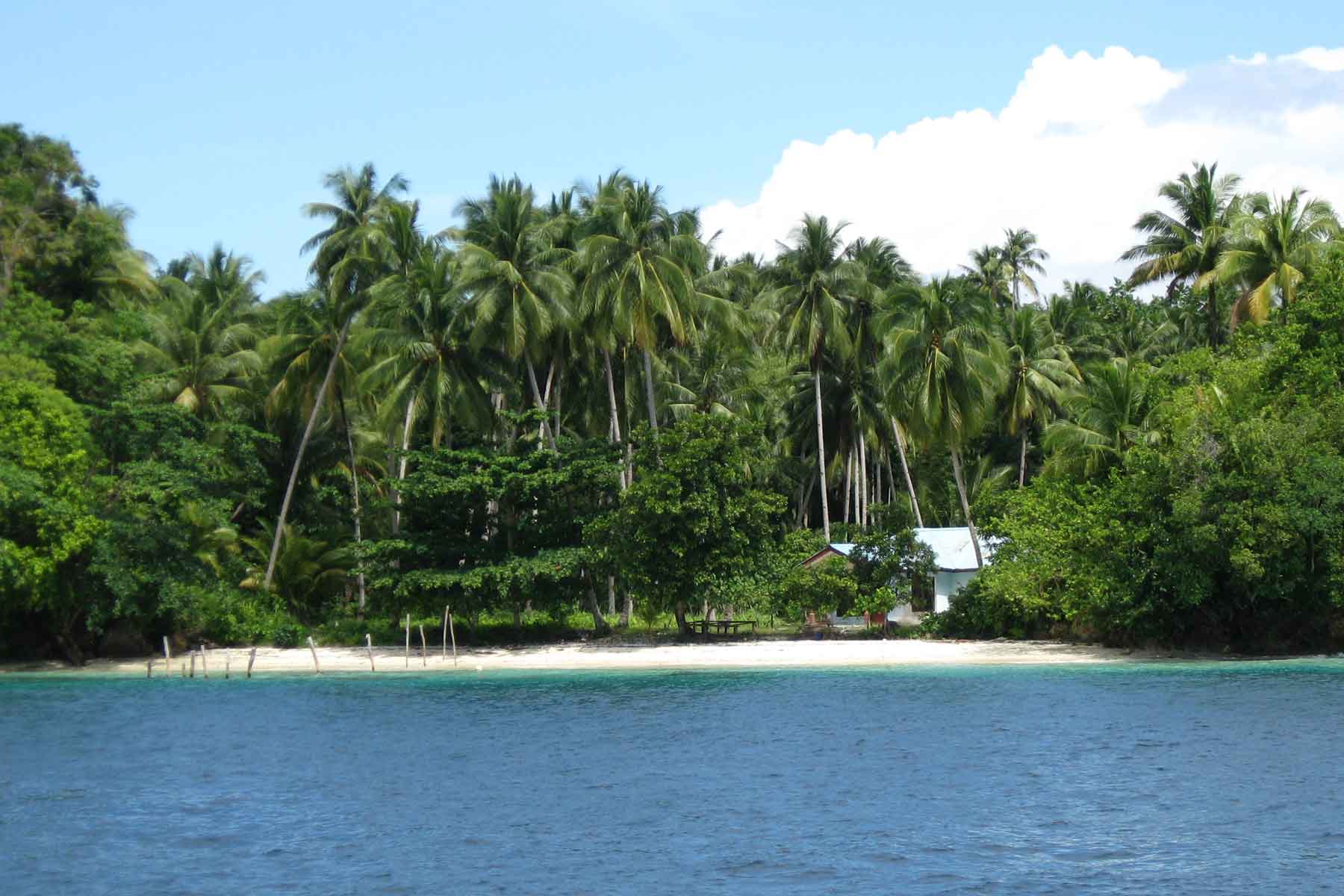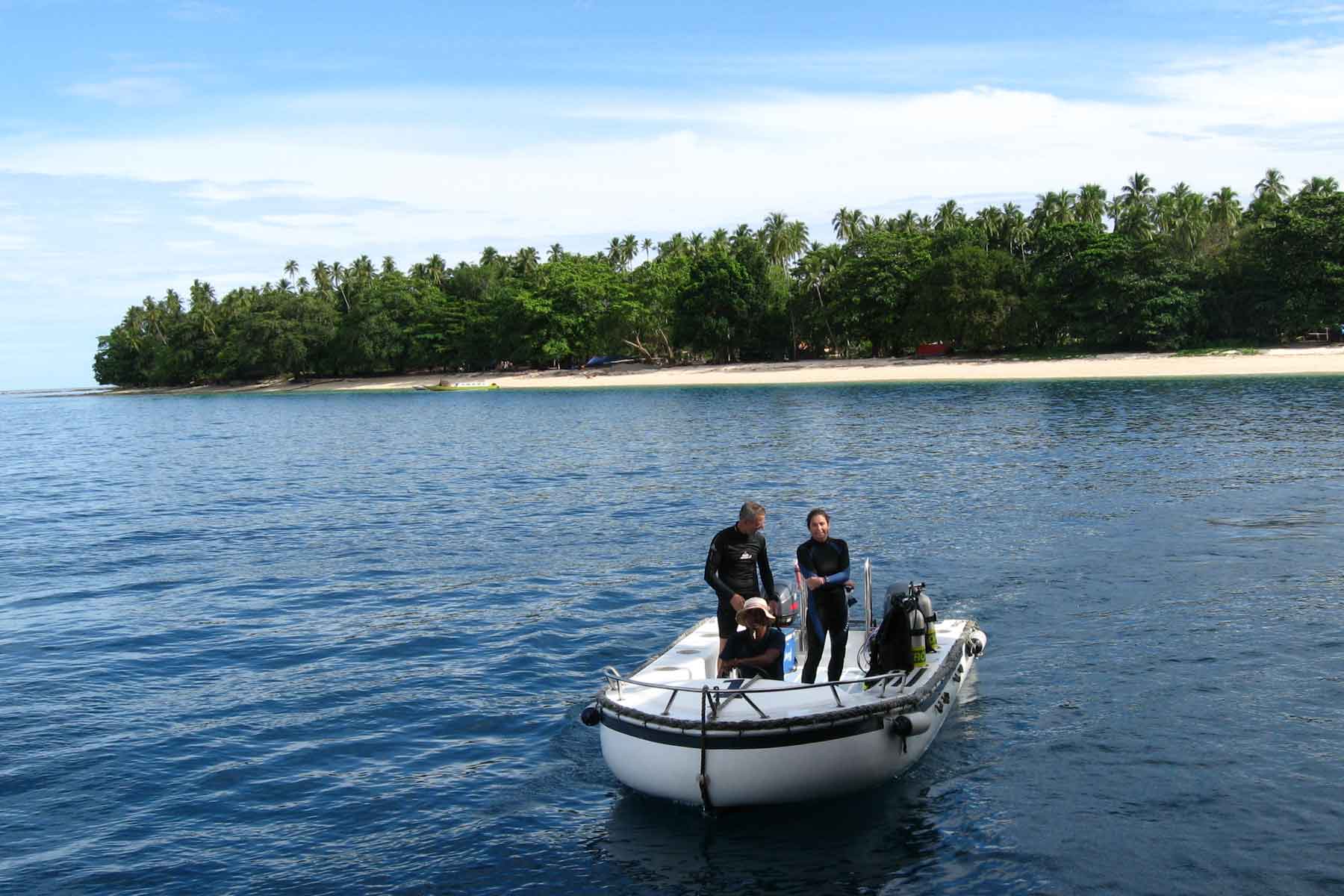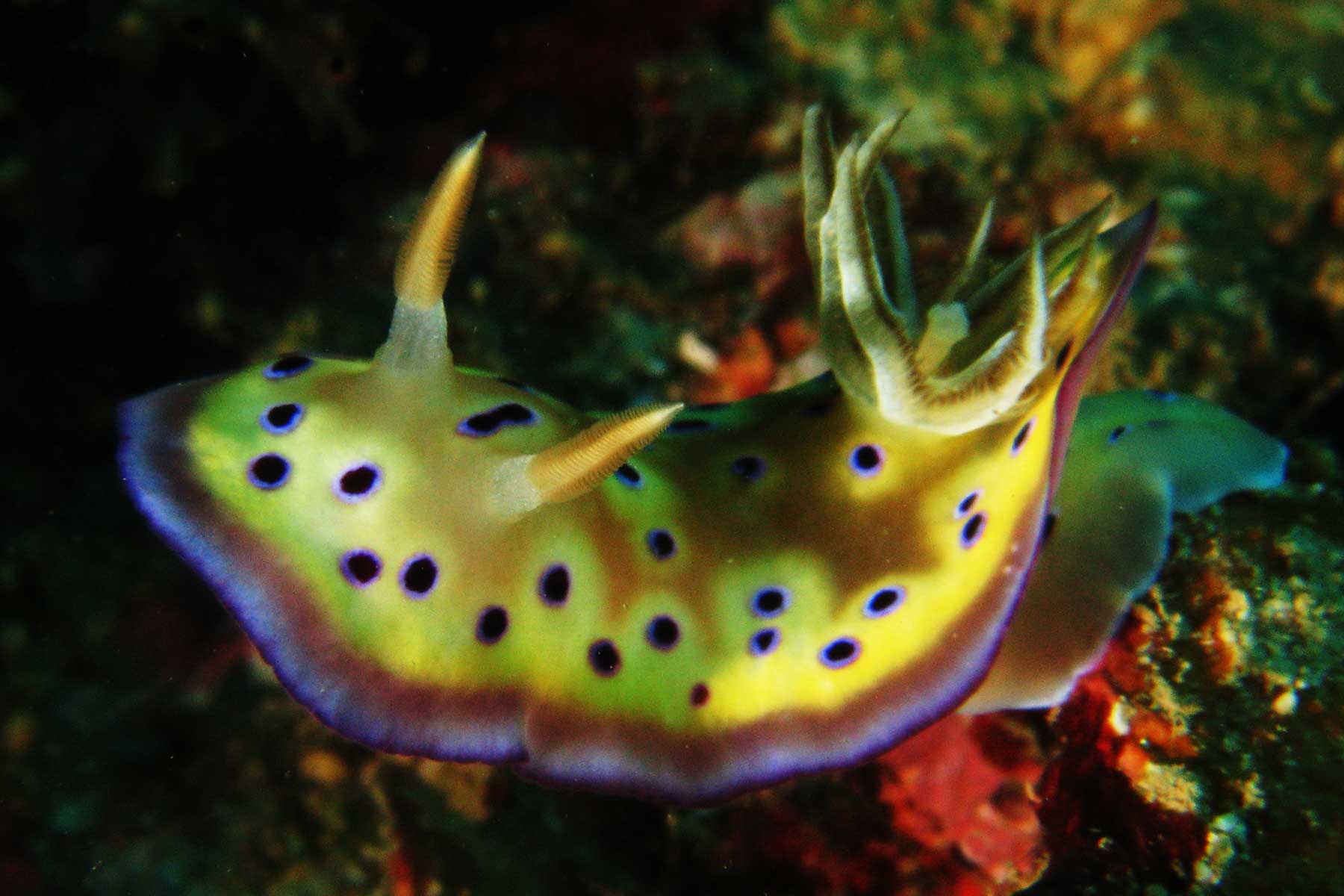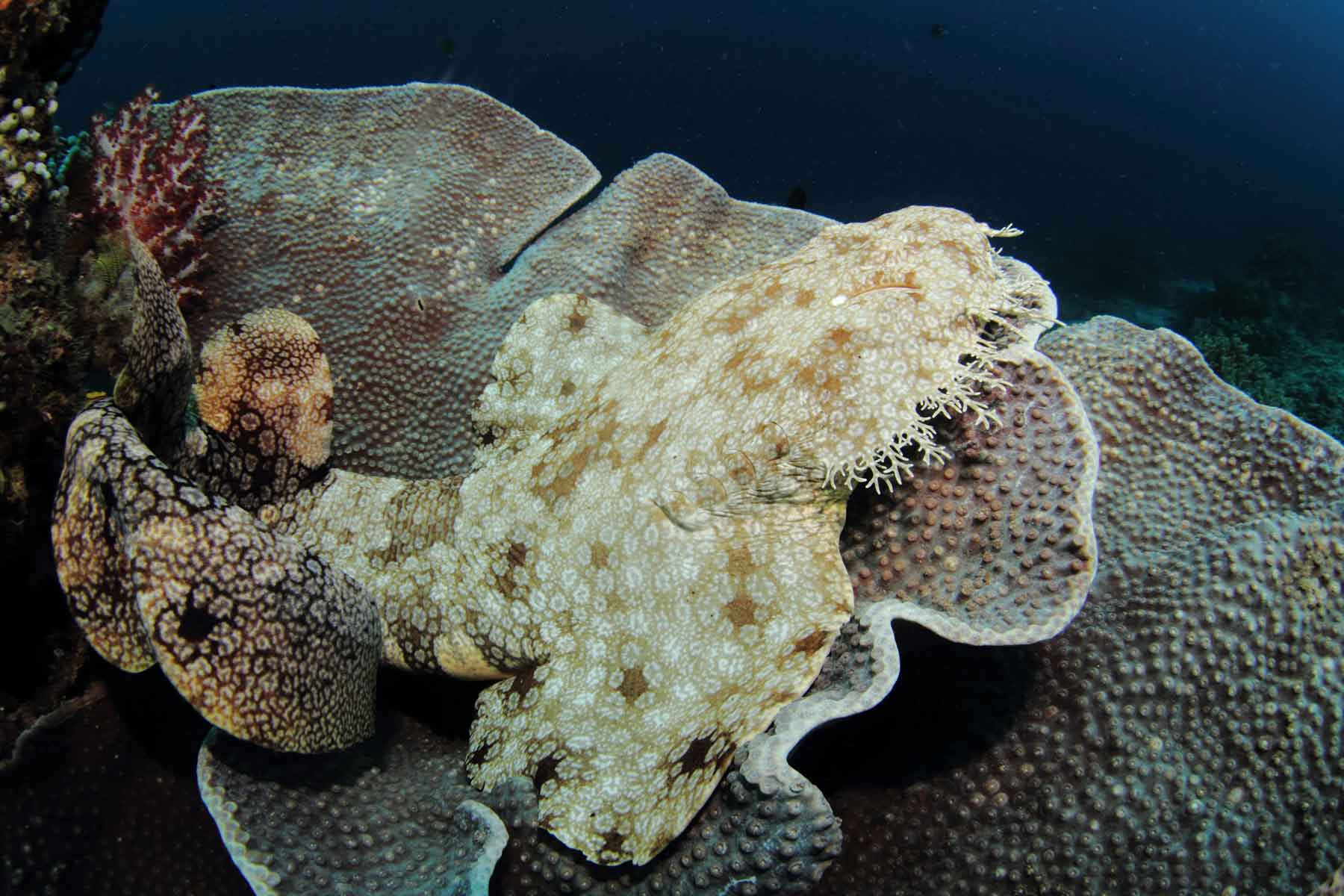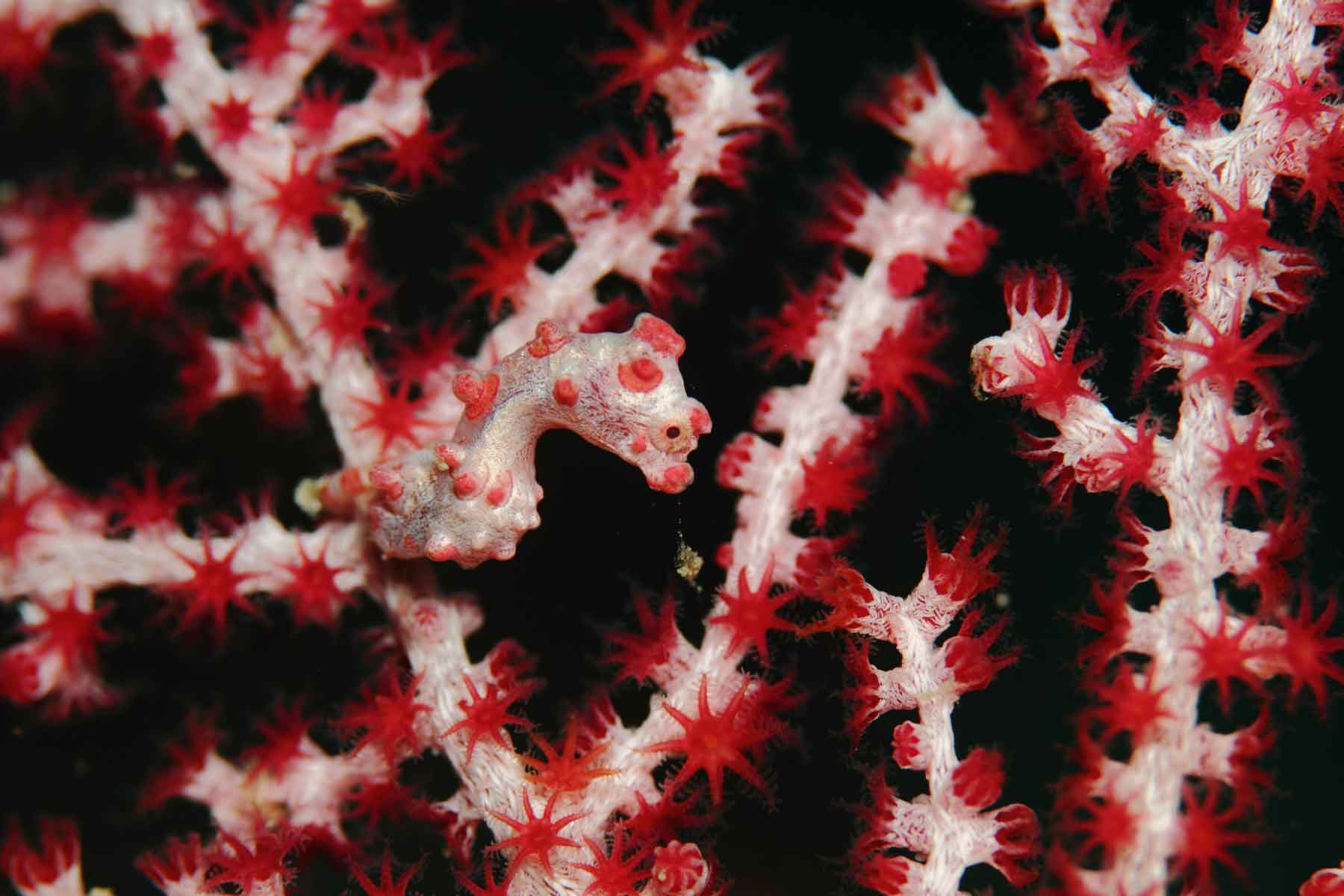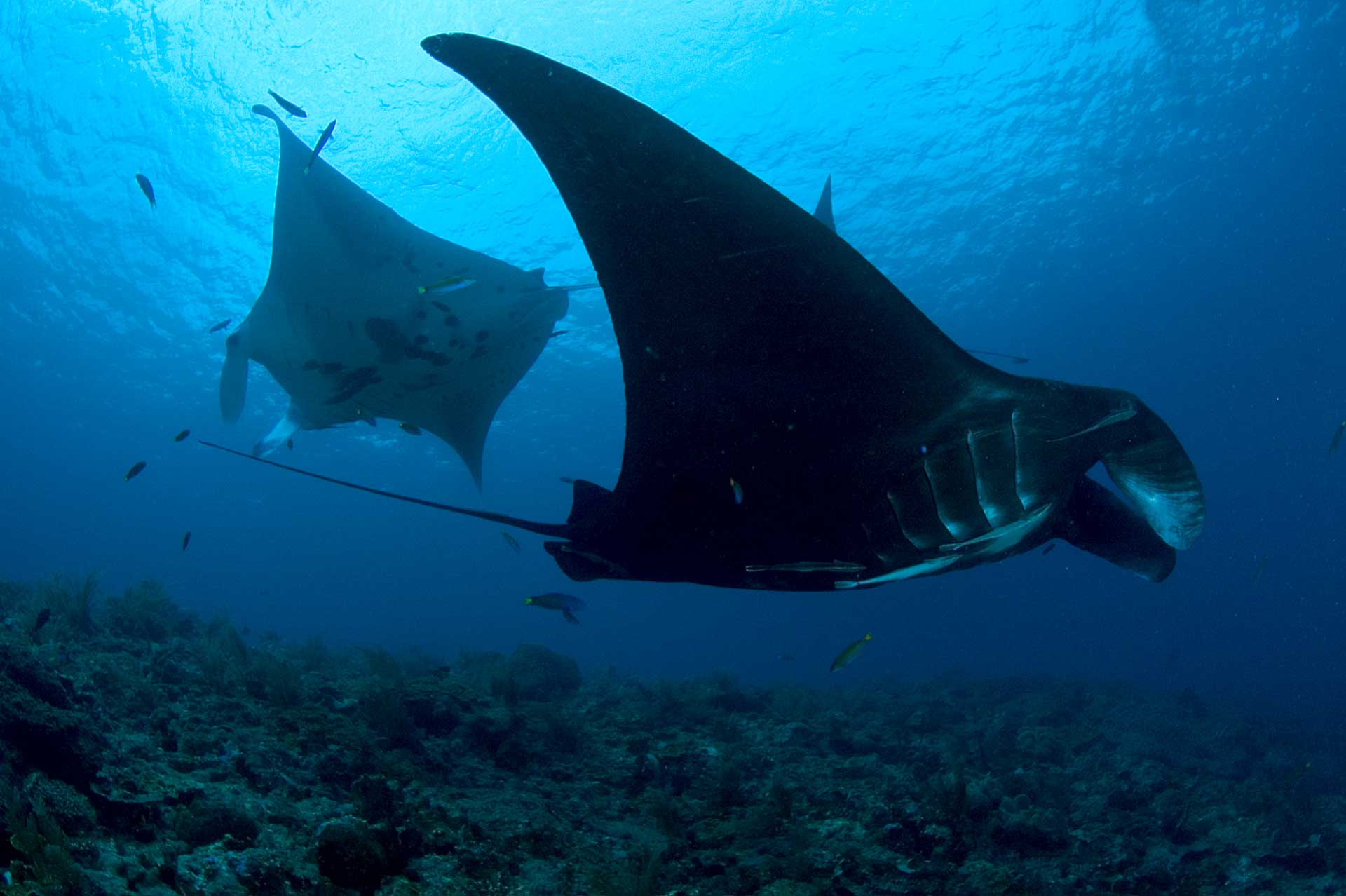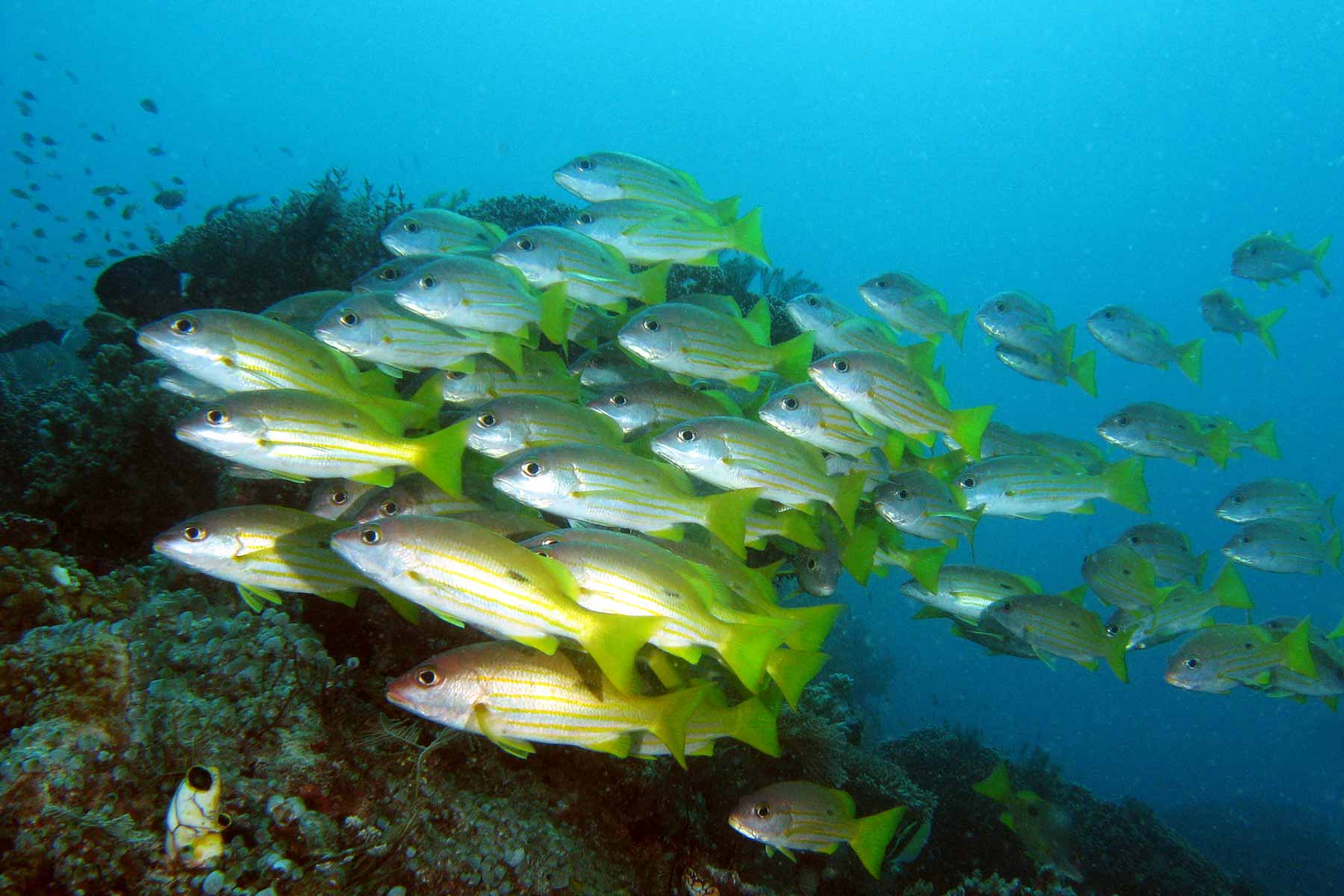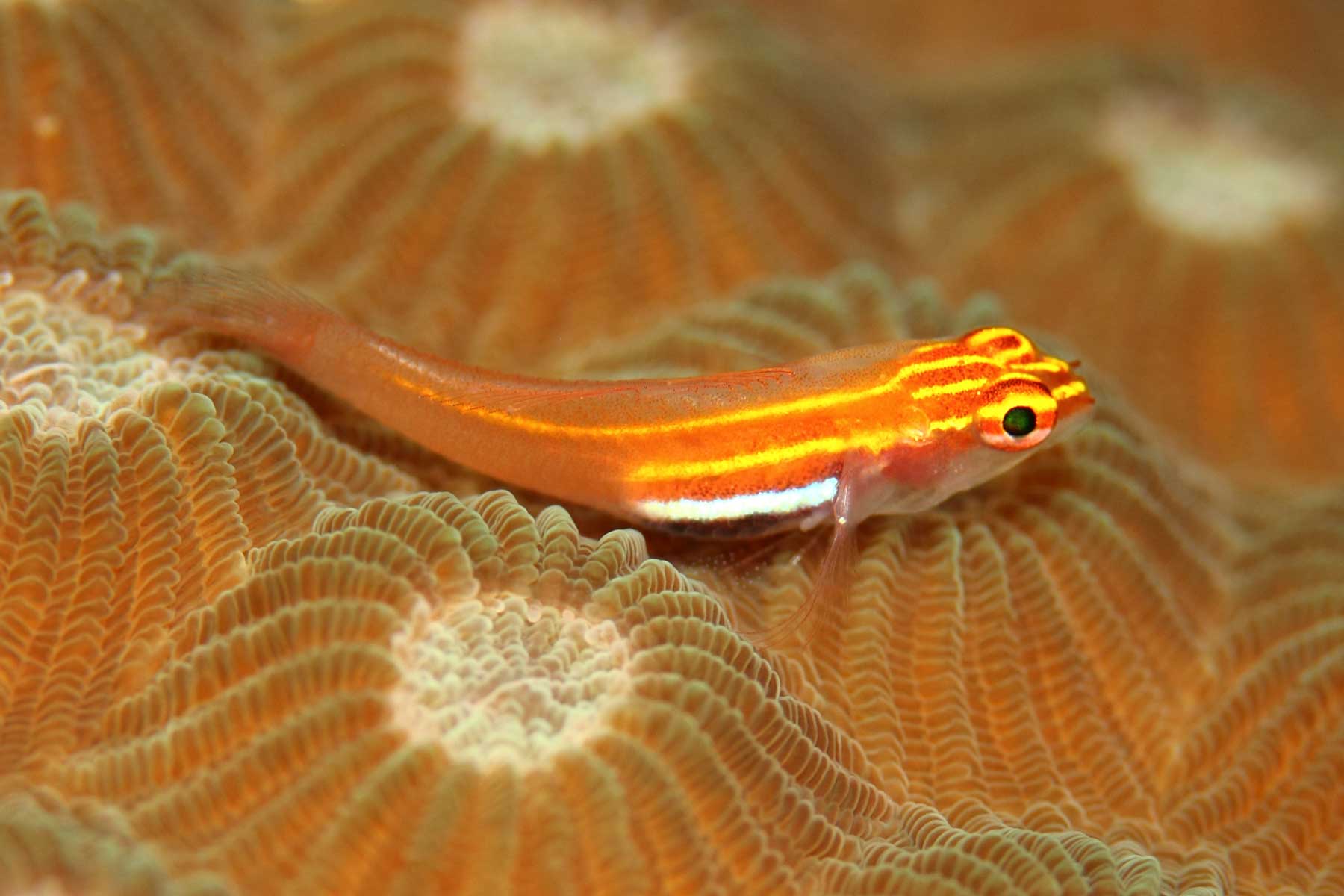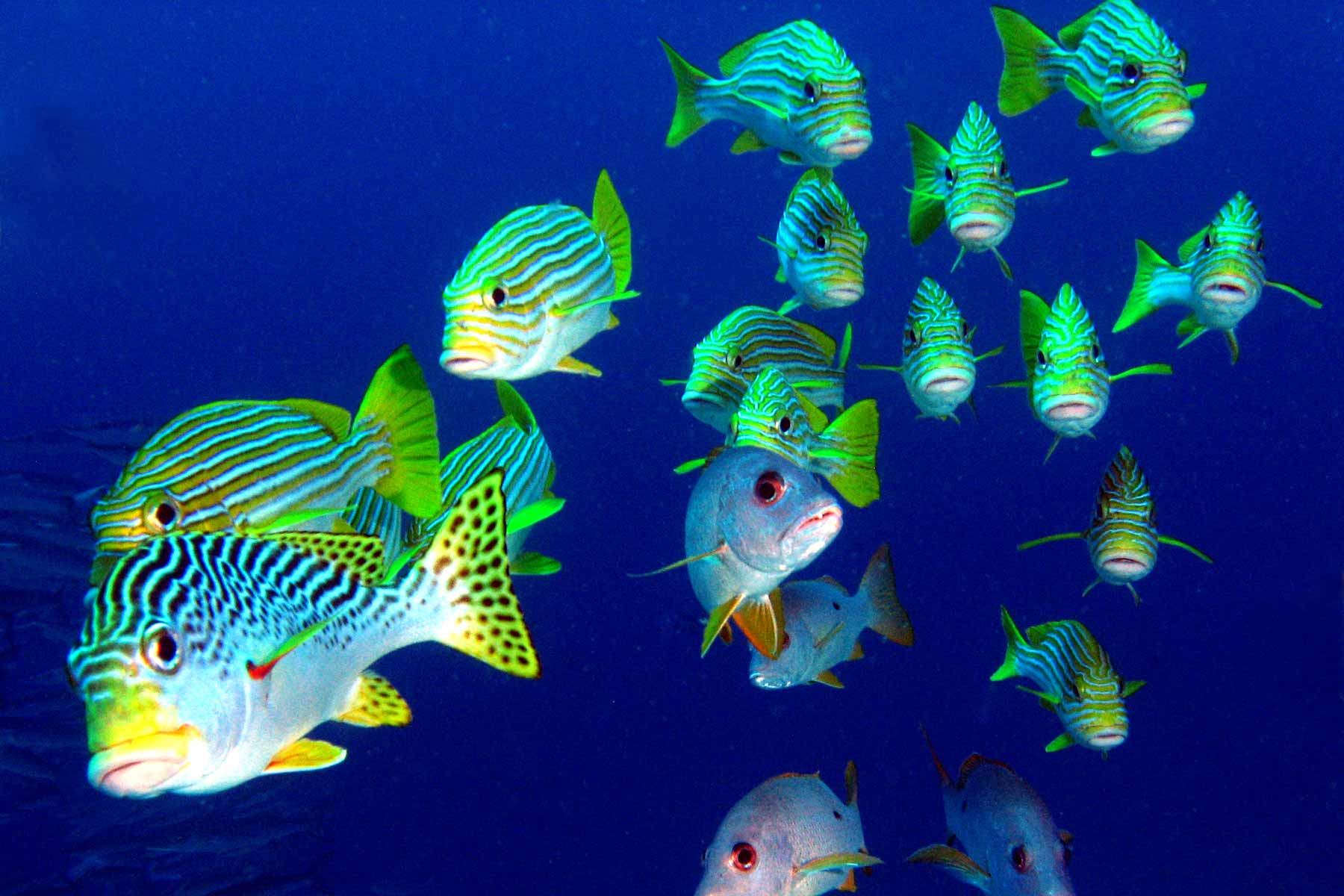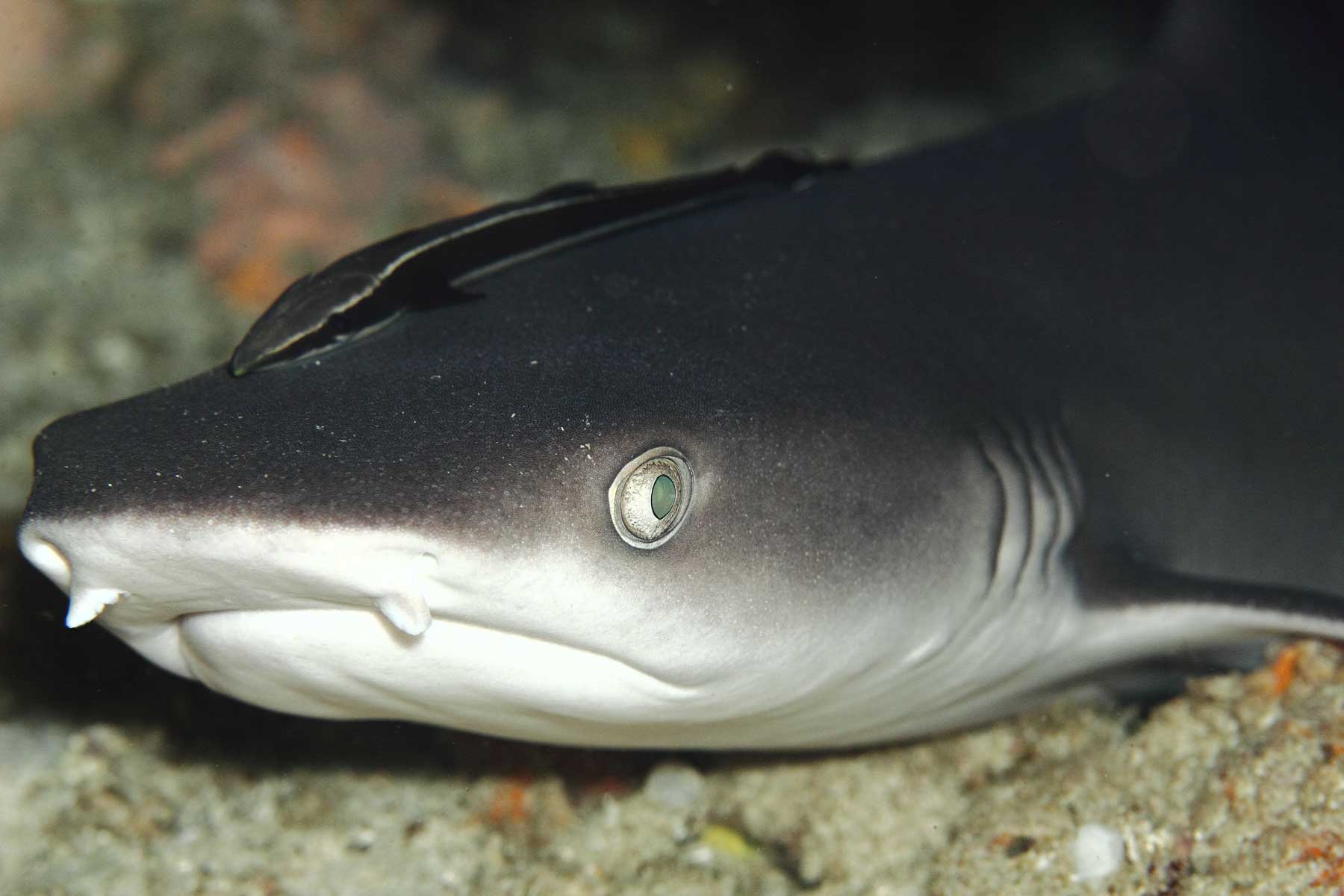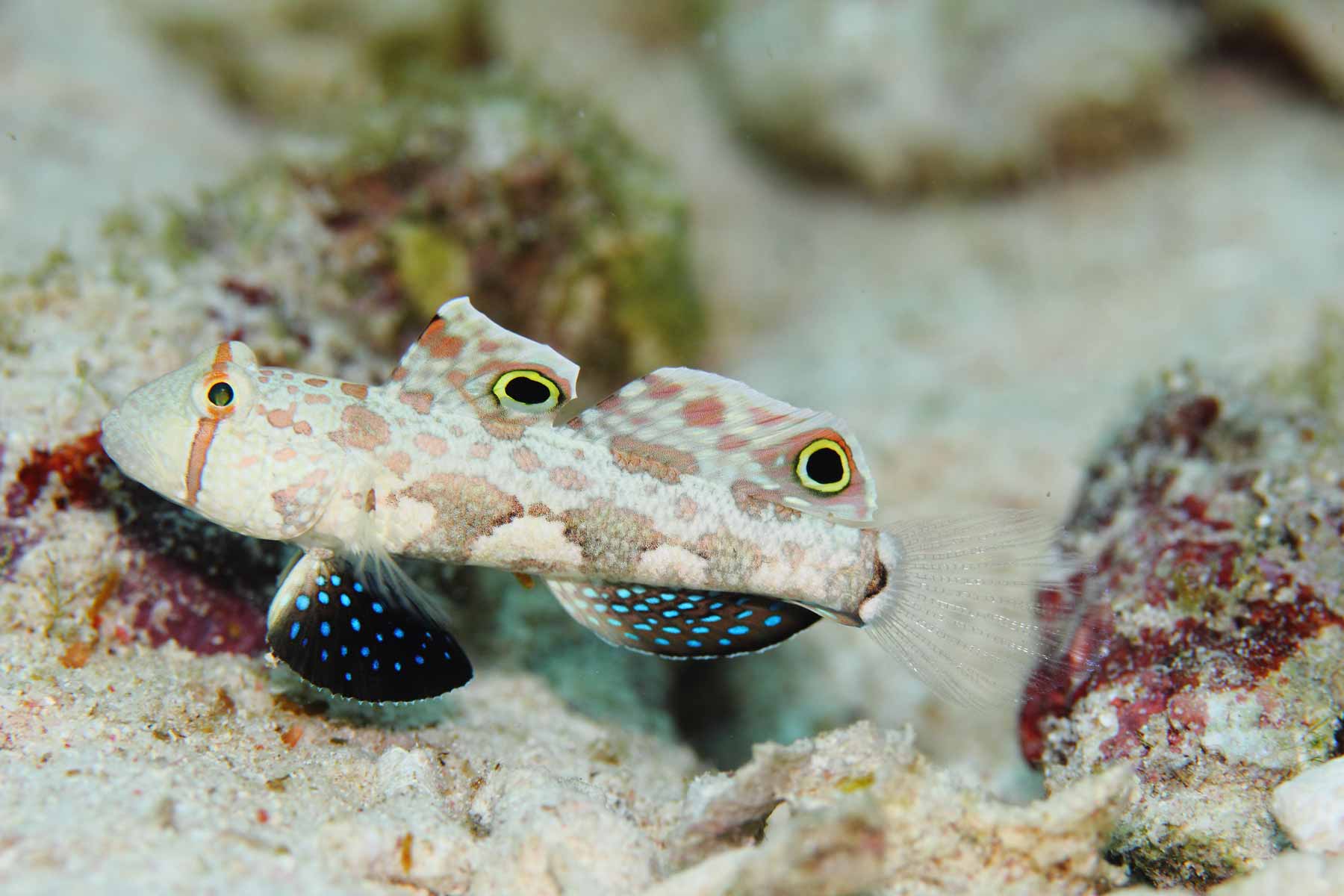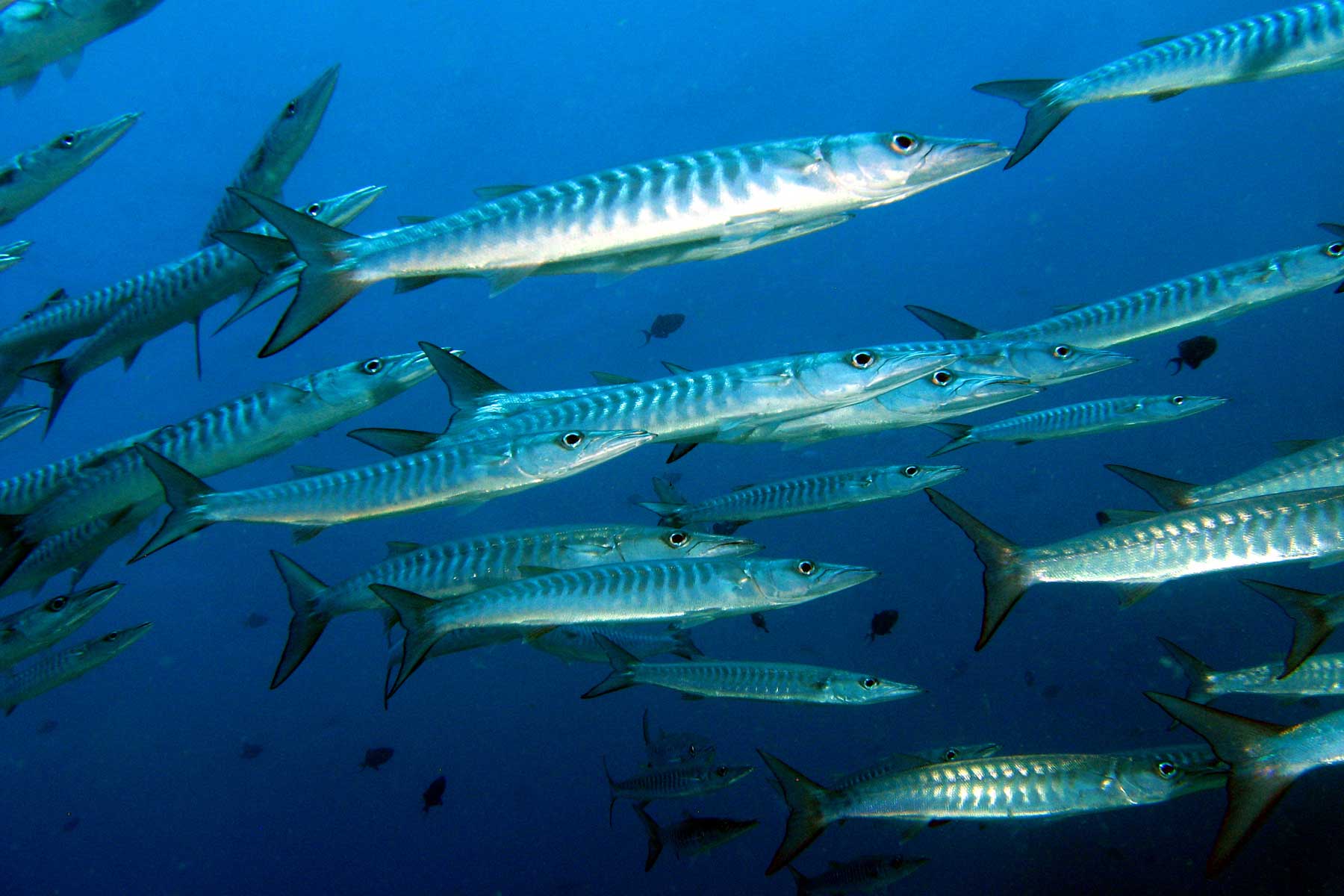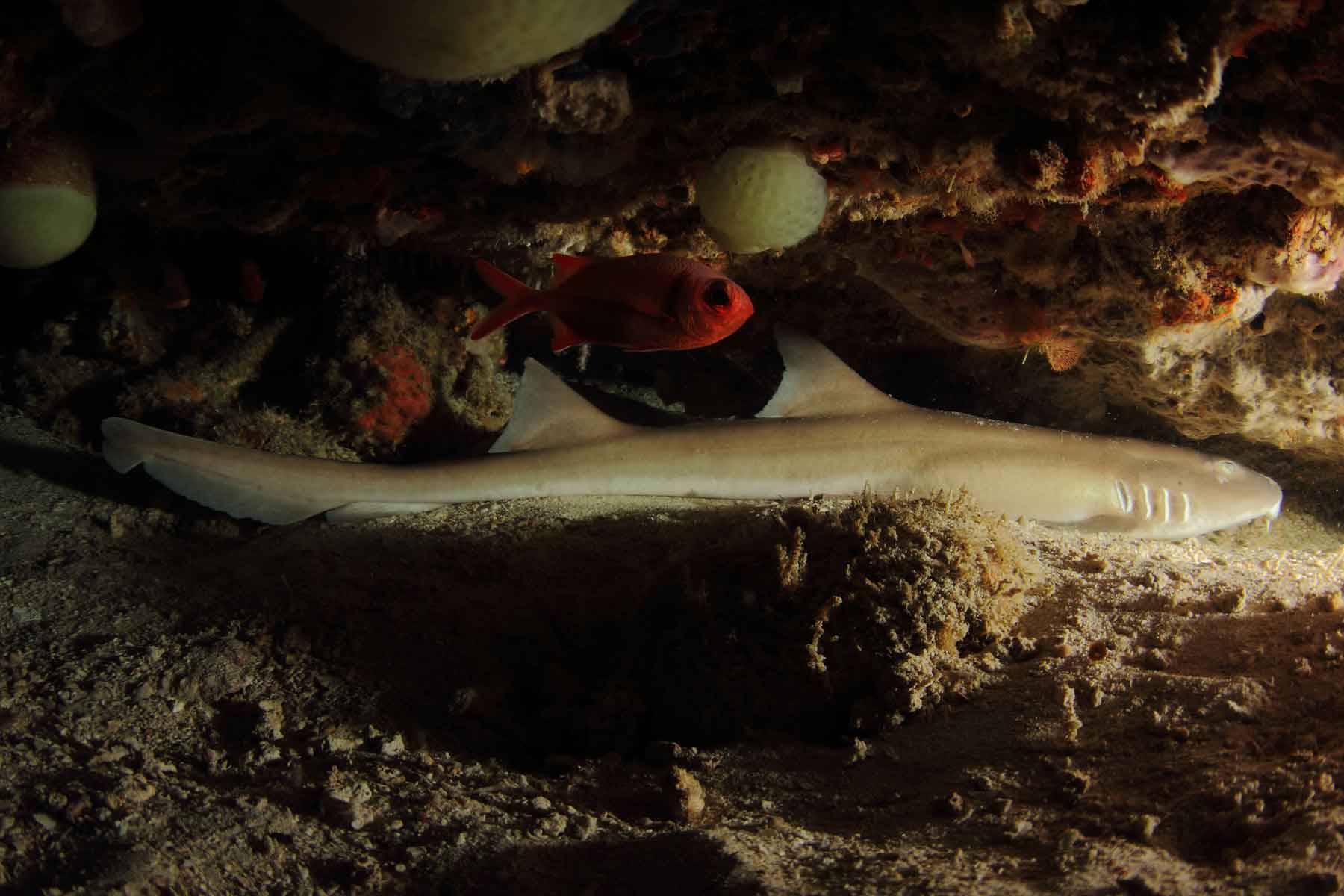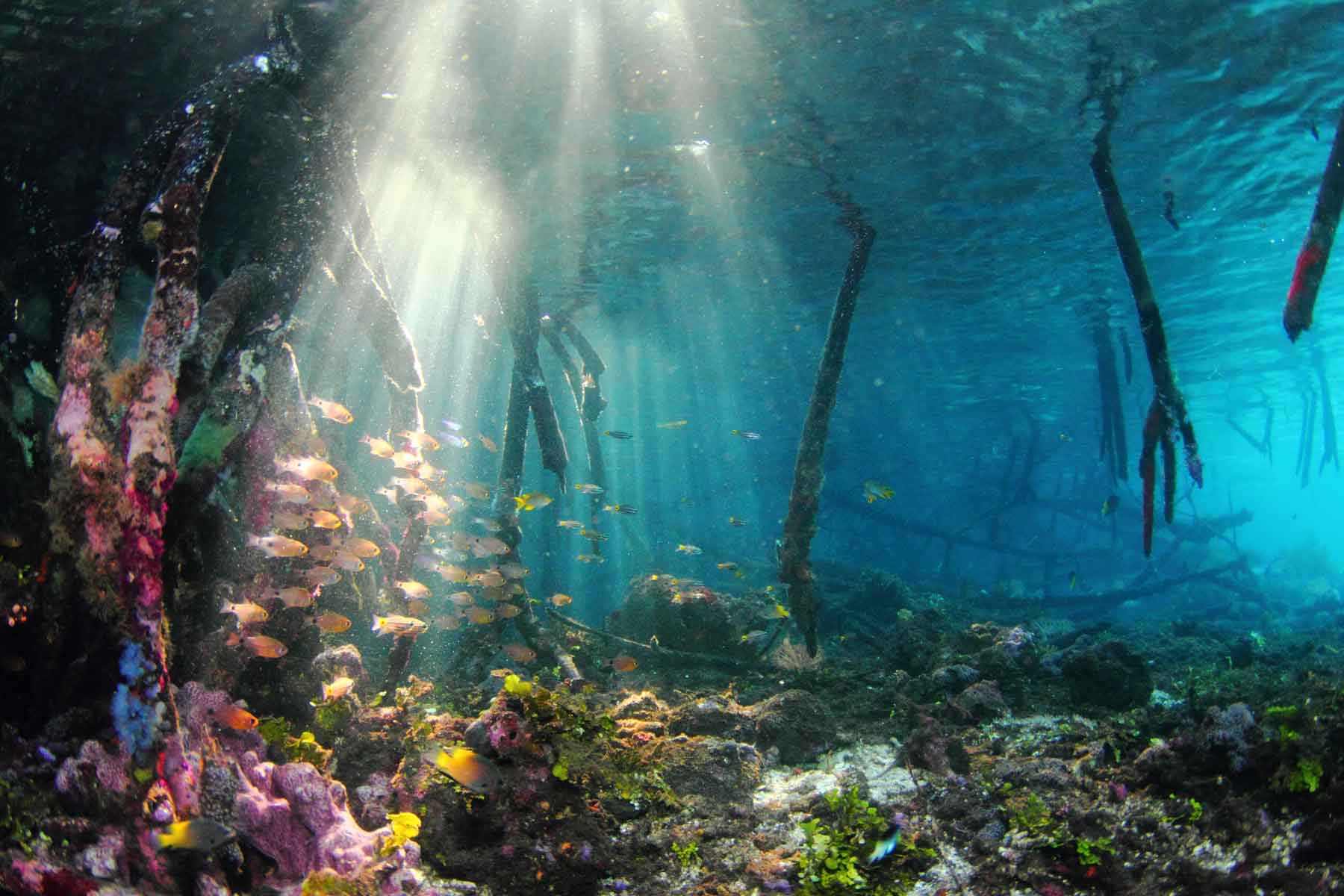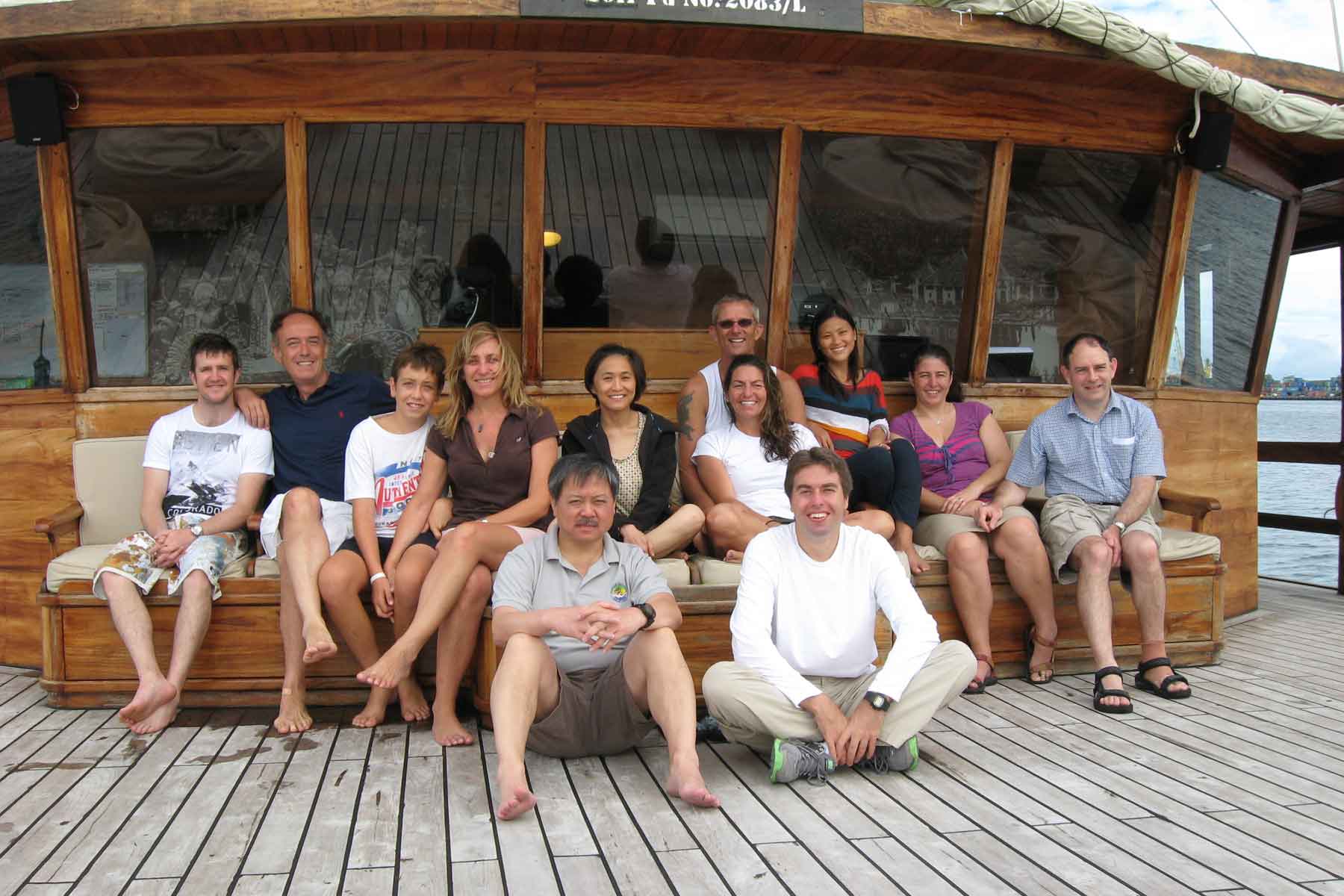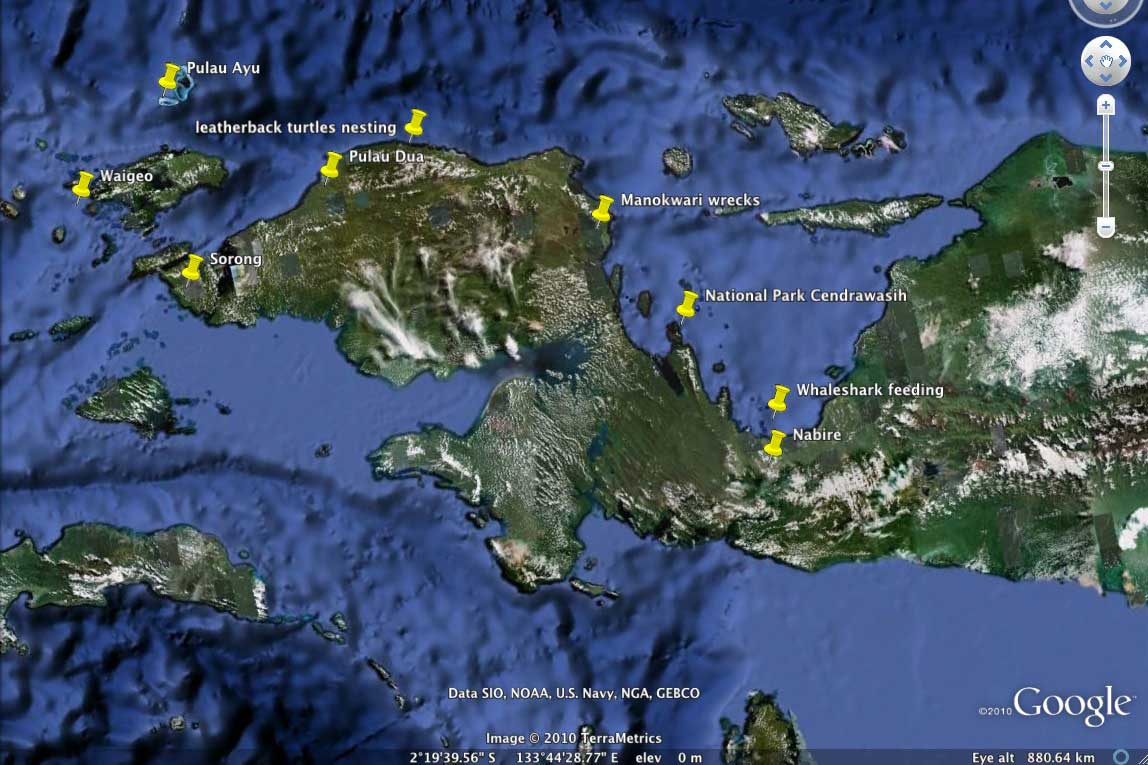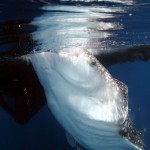Cendrawasih Bay & Raja Ampat Trip Report, July 2012
In July we left the UK for an Indonesian liveaboard trip that promised to be unforgettable. Our trip would start in a sleepy town called Nabire, located in the heart of Papua’s Cendrawasih Bay; it would then head up and over the Birds Head Peninsula and finish in famed Raja Ampat. Joining the trip were an international group hailing from the US, Canada, Hong Kong, Spain, UK and Australia. Our journey to Nabire would see us meeting our clients along the way and Bonnie from Equator Diving would be given the mission of haggling through many extra kilos of excess luggage (a smile goes a long way in Indonesia).
Once in Nabire we were whisked to the elegant phisini liveaboard – Damai II – without doubt one of the most beautiful liveaboards in the world. Our first morning on the Damai we rose early, the boat alive with excitement and anticipation at what we would see on our first dives in Cendrawasih Bay. Up until recently this remote bay was largely ignored by divers with most instead concentrating on nearby Raja Ampat. Then people began to discover unique species in the bay and a diversity count was done revealing that whilst the number of species was not quite at the levels on Raja Ampat it was still very high – and the Bay still warrants a lot more exploration! But for Cendrawasih biodiversity could for now at least take a back seat because a far bigger revelation was about to be revealed by the local Bagan fishermen – they had friends, big gentle friends.
Whale Shark encounters never to be forgotten!
Indonesia’s Bagan fishermen work on large wooden rafts with large nets hanging below them. At night the fishermen use lights to attract a small fish called Ikan Puri into these nets and the Ikan Puri it turns out is a favourite snack for a much bigger fish – Whale Sharks! Of course many nights at sea working on a raft is a tedious affair and so the fishermen and the Whale Sharks formed a bond – a friendship if you like. The love these fishermen have for the Sharks is evident when you visit the bay and see the fishermen jump in the water to play with the Shark – you really have to take stock of where you are and what you are witnessing to quite comprehend the complete uniqueness of what your eyes are seeing in this forgotten world.
Kitted up we left our liveaboard in small groups at staggered times to make sure there were never many of us in the water at any one time. Within a minute of entering the water we saw the first shadow approaching and from then on the rest seems like a dream. For two whole days we swam, collided with, photographed, videoed and simply enjoyed spending hour after hour with up to 4 whale sharks at a time. The whale sharks would approach the Bagan in search of the small Ikan Puri either from the Bagan’s nets or from the fishermen up top – here the Sharks would go almost vertical, their mouths breaking the surface to scoop up the small fish. They would then circle the Bagan, sometimes moving into the depths, before emerging again from the blue, an awe inspiring site that never fails to send a tingle down your spine. With the Sharks lining up at the net to feed it was amazing to see a 4 metre Whale Shark suddenly dwarfed by a 7 metre giant!
If you do a dive and get a glimpse of a passing Whale Shark your mind may in time struggle to really remember what it saw – if you spend two days eye to eye with Whale Sharks you will never forget. We will certainly never forget Cendrawasih Bay.
The Forgotten Wrecks of Manokwari
Following our amazing Whale Shark encounters we moved North first of all to Purup where Jellyfish put on a show for our cameras and mating Octopus put on an even better show! We then pressed further up to the coast to the port of Manokwari – a former Japanese base during WWII. Manokwari is home to a number of Japanese WWII wrecks rarely dived due to their location in this remote corner of the world. During our visit we would have the opportunity to dive two of these wrecks. The first wreck, the Shinwa Maru, was a large freighter lying on its side with big open cargo holds containing Sake bottles and bombs. Around the wreck there were patrolling Batfish, Scorpionfish and some beautiful Nudibranchs. The second wreck was a patrol boat, named the Cross Wreck, and whilst it was much smaller than the Shinwa Maru it had more abundant fish life, including plenty of critters in the anemones that were dotted around its perimeter – a site with a lot of potential for macro fans.
Up and Over the Birds Head Peninsula
The next steps in our journey would see us make our way around the Birds Head Peninsula to the promised land of Raja Ampat. Along the way would we stop a couple of time to break up the journey with some diving – one such stop was Pulau Dua. Here we visited an excellent site called the Junkyard, where a sunken Japanese platform from WWII attracts a lot of fish life with large schools of Snapper complimented by feeding Lionfish and some truly beautiful Nudibranchs. Here we also found a Leaf Scorpionfish, a particular favoirite of mine. On the North coast of Papua we hoped to witness the Giant Leatherback turtles coming onto the beach at night to lay eggs but alas our turtle luck was not with us and after a long night of waiting we had to leave and set sail for Raja Ampat!
Raja Ampat – the Promised Land
Our initial arrival in Raja was met with some swells which would prevent our first day plans of diving some of the more exposed, high octane sites of Raja’s Dampier Strait. Instead we headed for some of the Strait’s more sheltered sites such as Otdima and Batu Lima and whilst the dives here gave us some nice Pygmy Seahorse they were really just a warm up for what was to come in subsequent days.
The next day we headed to Gam Island where Raja started to show it’s true colours at a site named Citrus Ridge – here we got our first sighting of Reef Sharks, Eagle Ray, Barracuda hanging out in the channels currents and some of the high voltage diving we had be longing for. One of the most amazing things about Raja Ampat is of course its diversity and Citrus Ridge is a prime example of this for whilst one person would be admiring the passing pelagics others were taking photos of Pygmy Seahorse and rare Signal Gobies. Following our dives at Citrus Ridge we decided on a change of environment and our afternoon dive would see us enter the Mangroves than line the edges of some of Raja’s islands. The variety of environments on offer in Raja is another unique aspect of this destination. In the Mangroves the light angles beautifully for photographers and if you look carefully you can find archer fish close to the surface spitting out water to knock unsuspecting insects into the water and their mouths.
On our third day in Raja we could resist no more the temptation of visiting Manta Sandy – a ‘must do’ site on any trip to Northern Raja Ampat. With baited breath we waited for the resident Manta’s to approach the cleaning station and it didn’t take long before one appeared. The manta performed rolling somersaults for our cameras and then she disappeared into the blue. We then dispersed in search of other treats and it wasn’t long before a sleepy Tasselled Wobbegong was found. This beautiful Shark was subject to a good photo shoot before it was the turn of the resident Pegasus Sea Moth and a rare White Ribbon Eel.
Following a second successful dive at Manta Sandy we headed to another of Raja’s famous sites – Mioskon. Here, lined up along the reef was ball after ball of snapper, and a look underneath a coral or in a cave more often than not resulted in a Wobbegong sighting! Depending on who was counting, we found up to seven Wobbegong on that dive at Mioskon! One Wobbegong free-swam eventually landing atop a large coral making it perfect for photography, whilst another had a Marbled Shrimp hanging out just below its mouth!
As well as the Wobbies Mioskon was also home that day to a large adult Bamboo Shark hiding under a ledge and when we came back to Mioskon at night the Bamboo Shark came out, did a quick circle around one of our legs and then went off into the night! Our earlier night dives in Raja had also come up trumps, with the Papuan ‘Walking Sharks’ and the amazingly named ‘Donald Duck Shrimp’!
On our final day we headed back to the Dampier Strait to dive three of the best sites in Raja – Blue Magic, Sardine Reef, and Cape Kri. All three sites delivered classic Raja Ampat dives – there was diversity, vibrant colour, big fish action and big, big smiles at the end of each dive! On deck there were stories of people spotting up to 10 Reefs Sharks, and nobody could fail to miss the schooling Barracuda, balls of Trevally, hundreds of Snapper, posing Sweetlips, Napoleon Wrasse, Bumphead Parrotfish and a hunting Sea Snake.
With our final dive finished it was time to pack our gear away, tells stories over Beer Bintang, start planning our next trips and contemplate upgrading our cameras (always a danger on diving holidays). The next day we would enjoy an excursion to a local fishing village in Sorong town whilst our bodies got rid of all the Nitrogen, we would then travel as a group to the Island of Makassar before going our separate ways – whether it be straight back home, up to the highlands of Toraja or on to Bali in search of the seasonal Mola Mola.
Boat life
On this 11 night liveaboard meal times, surface intervals and evenings were a lot of fun. We had laughs sharing Indonesian phrases – the most favoured seemed to be ordering of beer and toast – not normally together. I believe that some of the crew may have been left with a new dance – the “Macarena”. There were some great marine life presentations, underwater photography advice, a lot of Jason Bourne movies and access to all the latest fish books – especially important in a place like Raja where you may just discover a new species!

